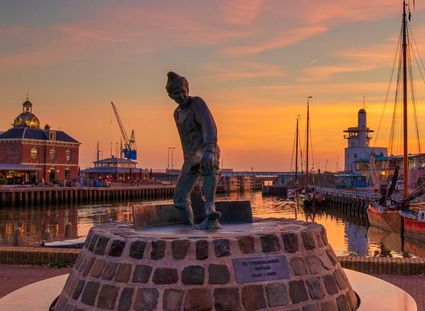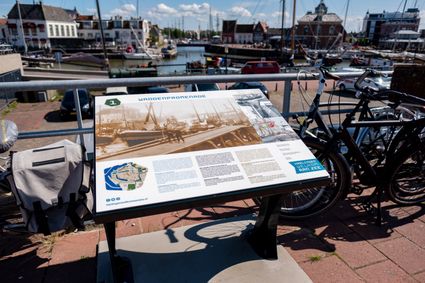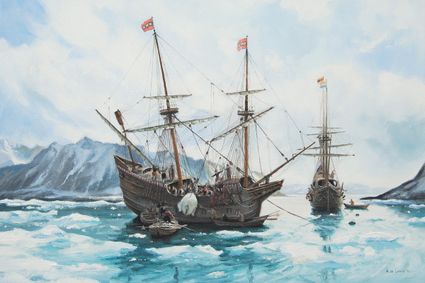Tjerk Hiddes de Vries
Tjerk Hiddes is a famous admiral and Frisian naval hero who lived in the seventeenth century. He epitomises Harlingen's illustrious nautical history. A monument in memory of this Harlingen naval hero can be found on Grote Bredeplaats in Harlingen. And did you know that Michiel de Ruyter had a portrait of De Vries, who was mortally wounded on the battlefield, hanging in his front room? That shows how much De Vries was loved and admired.
Tjerk Hiddes de Vries
Tjerk Hiddes was born on 6 August 1622 in Sexbierum, the second son of the mill-owning couple Hidde Sjoerbs and Swab Tjeirckdochter. His nephew, Hidde Sjoerds de Vries, served in the Admiralty of Friesland. At the age of 12, Tjerk Hiddes first set out to sea as a sailor. In 1648 Tjerk married Nannetje Atses and the couple moved to Harlingen, the largest port in Friesland. Here he quickly worked his way up in the merchant navy, and became a skipper.
Admiralty of Friesland
In the Golden Age of the Netherlands, Tjerk Hiddes served the Frisian Admiralty and fought in various wars for the Republic of the Netherlands, becoming a true naval hero. During the 1658 Northern War against the Swedes, he joined the fleet of Admiral Jacob van Wassenaer Obdam as captain of a troopship: the Judith. He made a great impression by taking out three enemy ships. In recognition of this, he was appointed extraordinary captain of the Frisian Admiralty, though he continued to sail as a merchantman most of the time. Later, as captain of d' Elff Steden, he survived the Battle of Lowestoft when he skilfully freed his ship from an entanglement with a group of burning vessels. After this he was appointed First Lieutenant Admiral of Friesland, in succession to Auke Stellingwerf, who had died in the battle. In the period that followed, Tjerk assumed - in addition to the name Hiddes - his second surname De Vries (‘The Frisian’), as a proud reference to his own province. After this, he fought on the flagship Groot Frisia (with a fleet of 40 Frisian ships) under the command of Michiel de Ruyter in the Four Days' Battle at Dunkirk.
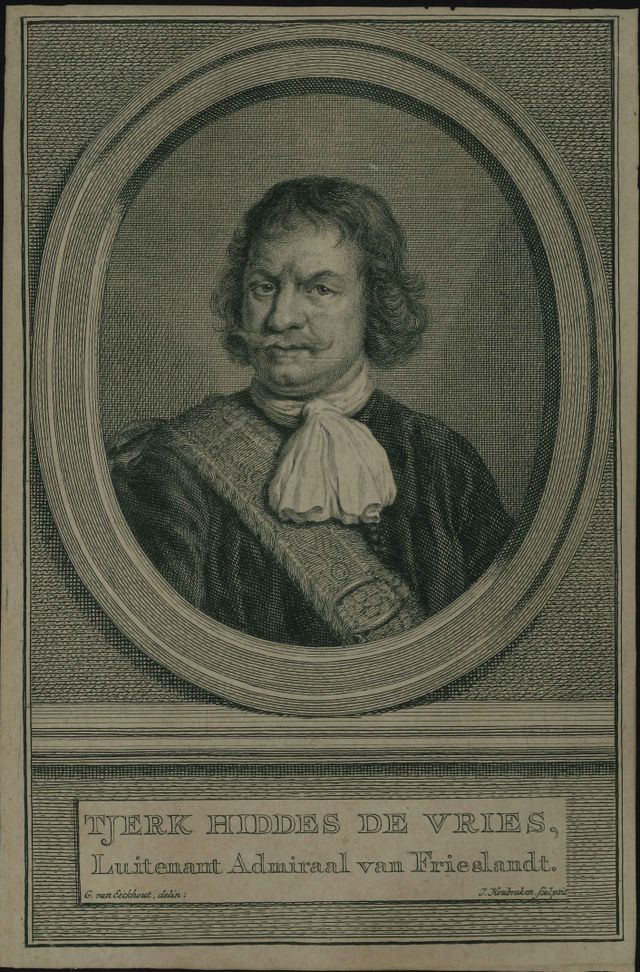
-
Unveiling the monument
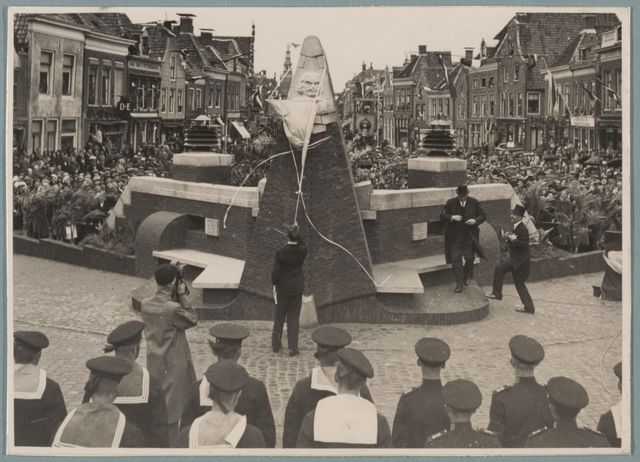
-
Portrait Tjerk Hiddes de Vries
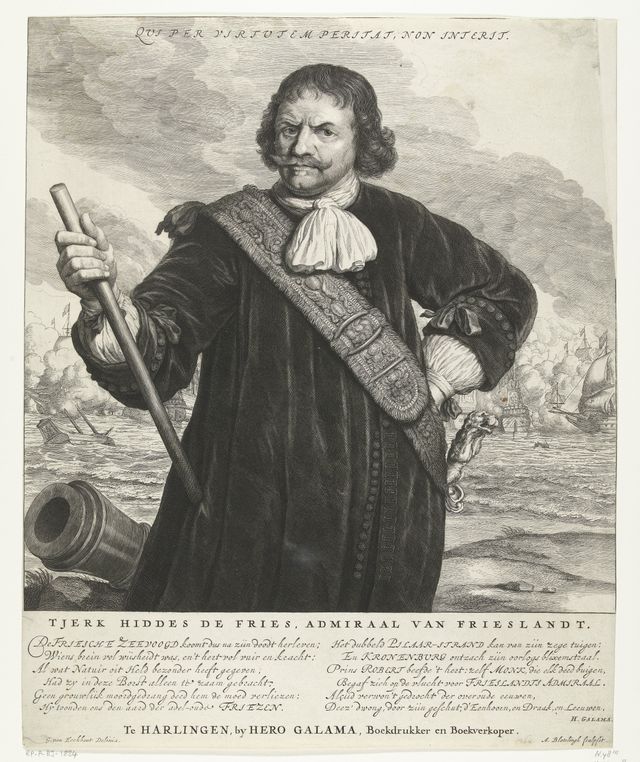
Monument of Tjerk Hiddes de Vries
Death
In the Two Days' Battle on 4 and 5 August 1666 (during the Second Anglo-Dutch War), Tjerk's ship came under heavy fire. The Dutch fleet was attacked by the English admiral Ruprecht van de Palts. Tjerk lost an arm and a leg, leaving him mortally wounded. Yet he tried to convince his crew to continue fighting, because he did not want to die while fleeing. He died at the age of 44, just over a year after the death of his predecessor Auke Stellingwerf.
Grave and commemorations
Tjerk Hiddes was buried, at state expense, in the Grote Kerk church in Harlingen; an event with much pomp and circumstance. However, after the church had been rebuilt in 1772-1775, the location of his grave was lost. At the street Grote Bredeplaats in Harlingen, surrounded by cosy restaurants, quaint shops and art galleries, a monument honours Tjerk Hiddes de Vries. The monument is in the shape of a ship's bow, with a sculpture of De Vries as the figurehead, and wings on both sides that serve as benches. It looks out over the Zuiderhaven (the south harbour), where the Frisian war fleet was stationed. Tjerk’s memory is also kept alive through the Tjerk Hiddessluizen (Tjerk Hiddes locks) in the port of Harlingen and important for inland shipping. Several ships of the Royal Netherlands Navy also carry his name, which shows the important historical status of Tjerk Hiddes de Vries.

Admiralty city Harlingen
An open connection to the sea, shipyards and harbours - you find it all in Harlingen. Not only today, but also in the Golden Age. It is therefore not surprising that the Admiralty of Friesland settled in Harlingen from 1645 to 1795. During this period, the admiralty reached its peak. The admiralty produced the Harlingen naval heroes Tjerk Hiddes de Vries and Auke Stellingwerf.
Discover admiralty city Harlingen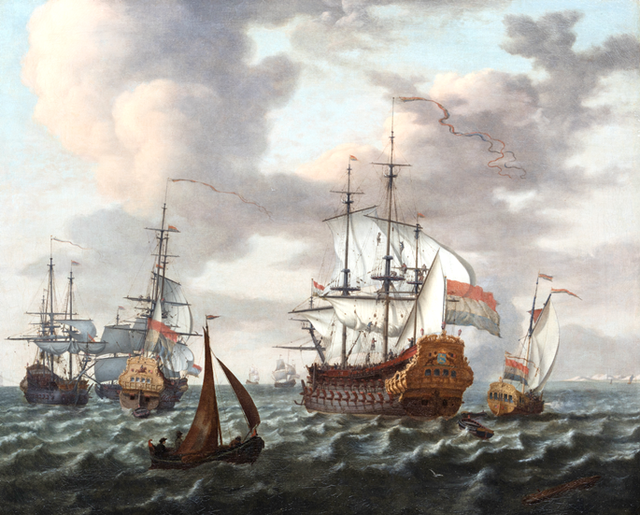
Auke Stellingwerf
Just like Tjerk Hiddes de Vries, Auke Stellingwerf was a Frisian admiral who lived in the Golden Age. He was Friesland's first lieutenant admiral.
Discover the story of Auke Stellingwerf


